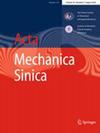Mechanical behavior and axial load optimization of Bi2212 superconducting CICC with elastic modulus
Abstract
The Bi2212 high-temperature superconductor is considered one of the solutions for manufacturing large high-field magnets due to its excellent current-carrying performance. The key issue is to improve the mechanical properties of Bi2212 cable-in-conduit-conductor (CICC), as they are sensitive to stress and strain. Therefore, This paper utilized the equivalent elasticity modulus (EEM) method and superconducting wire properties to characterize the CICCs at 300 K and 4.2 K. Then, the EEM of the CICC at various cable stages was analyzed at both short twist pitches (STPs) and long twist pitches (LTPs), and the variation in EEM with void fraction, heat treatment (HT), cryogenic shrinkage, and cable patterns was examined to achieve optimal axial tensile strength. Research results show that the LTPs have higher EEM and axial tensile strength than the STPs, while STPs have better elongation to protect internal wires. Improving cable strength in the earlier stages contributes more to improving the overall performance than the twist pitch of current stages. The Bi2212 CICC maintains better mechanical strength when the porosity is between 28% and 30%, considering HT and low-temperature shrinkage. While the cable temperature drops to 4.2 K, some factors will have little impact on the EEM and can be simplified in multi-level analysis, such as wire reduction in HT, cooling shrinkage, and cable patterns. This study systematically investigated the axial mechanical behavior and work conditions of Bi2212 CICC at 300 K and 4.2 K, offering valuable insights for design applications.

 求助内容:
求助内容: 应助结果提醒方式:
应助结果提醒方式:


